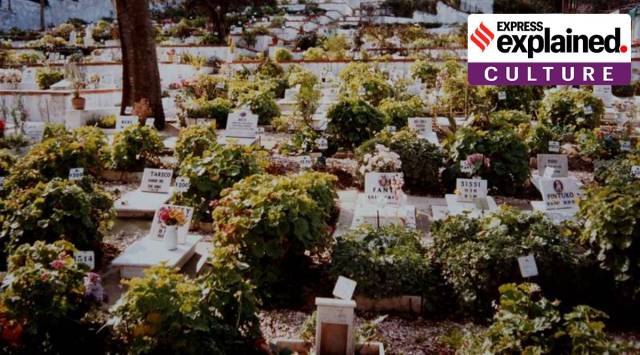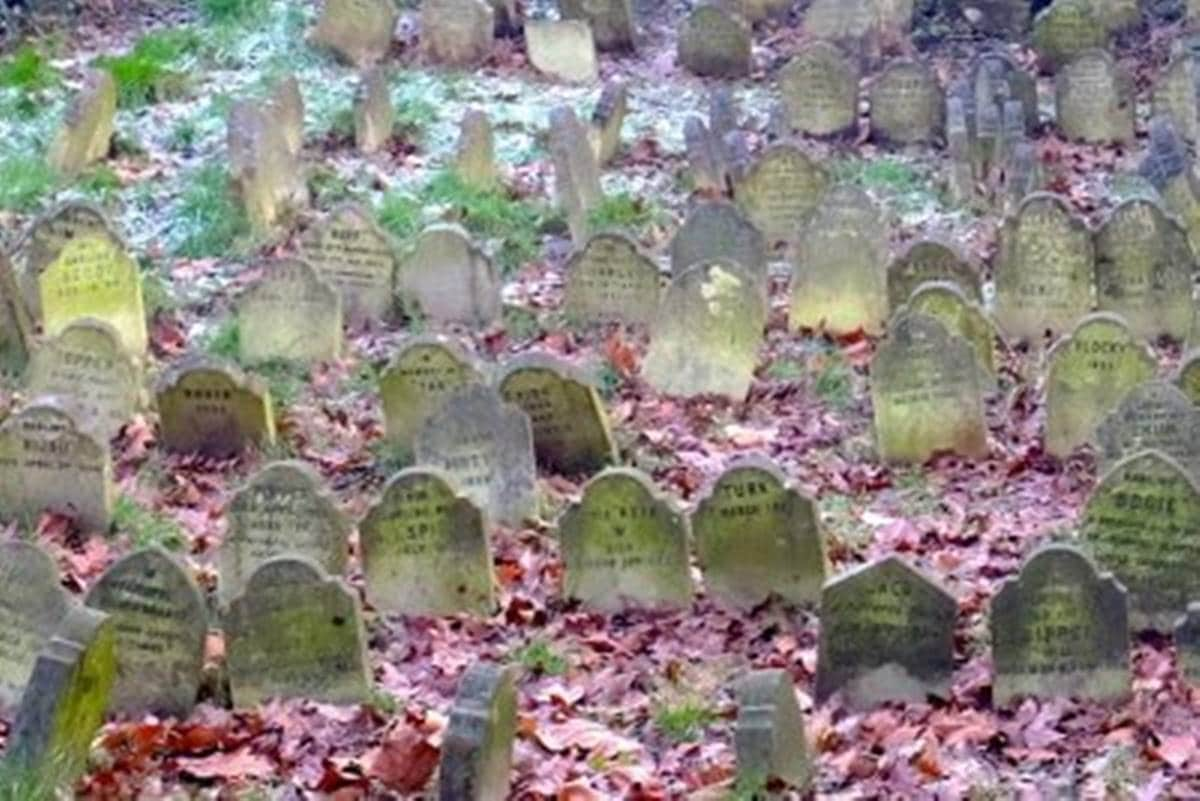“Could I think we’d meet again, it would lighten half my pain,” reads the inscription on a tombstone. Another says, “God bless until we meet again”. These are from the graves of dogs in the UK, erected by grieving owners and indicating, according to a new study, that an increasing number of pet owners cling to a belief in a heaven or an afterlife for their pets, and, that they will eventually be reunited.
The study was conducted by Eric Tourigny, a researcher from the Department of History, Classics and Archaeology, Newcastle University, UK. The paper, titled “Do all dogs go to heaven? Tracking human-animal relationships through the archaeological survey of pet cemeteries”, was published in the journal Antiquity by Cambridge University on October 27.

In a year when the pandemic has made death ubiquitous, the study sheds light on the ritual of mourning in the intimate but undefined relationship between humans and animals. Tourigny walked among tombstones that have been erected since the Victorian period in four major pet cemeteries in England, for this project on how one has let go of a beloved animal over the eras.
Story continues below this ad
“I had been working on an archaeological collection from 19th century Toronto, which contained a back-garden dog burial that intrigued me. As a zooarchaeologist (combination zoology and archaeology), I study animal bones recovered from archaeological sites to reconstruct past human-animal relationships. After coming across this dog, I started researching the different ways people buried their pets in the 19th century and that’s when I first stumbled upon the fact that the first public pet cemeteries appeared in the late 1800s.
I was surprised by how recent this was and how many of the gravestones still survive,” he says to The Indian Express in an email interview. Here’s what his research says about the changing dynamics of human-animal relationships snipped by death:
A quick departure
Tourigny writes that, for as long as people lived with animals, they had to deal with bodies of dead animals. “Although dog burials are commonly recovered from prehistoric and Roman sites in Britain, fewer are found in medieval contexts, when dog and cat skeletons are more likely to be recovered from refuse deposits. Not all animal bodies were buried in the post-medieval period: sometimes, dogs and horses were sold to knackers’ yards, where carcasses could be rendered down to produce useful materials, such as skins, and meat for animal consumption.
Such post-medieval disposal practices do not necessarily reflect a lack of care for the animals in life, but rather the influence of Christian doctrine on appropriate burial practice, and hygiene concerns related to body disposal,” he writes in the paper.
Story continues below this ad
Also in Explained | Were Indians making cheese 4,500 years ago? What a study has found
A spot for Cherry
In the 18th century, epitaphs and elegies for pets began to be published in local newspapers, but the tone was satirical and humorous except in a. few that reflected contemporary discussions on subjects such as whether animals had souls.
The few pets that received a ceremonial farewell belonged to affluent households that erected memorials in private gardens. Then, in 1881, a Maltese Terrier called Cherry passed away at a ripe, old age. He used to be a regular at Hyde Park in London, so his owners approached a gatekeeper with a request that was strange for the time — could Cherry be interred at his favourite spot?
 The pet cemetery in Hyde Park, London. (Photo: historic-uk.com)
The pet cemetery in Hyde Park, London. (Photo: historic-uk.com)
The gatekeeper cleared a patch and Cherry became the first pet in the history of the UK to get a public grave. It stood for several years, with a little headstone reading, “Poor Cherry. Died April 28. 1881”. That opened the floodgates, with hundreds of elite dog owners, such as the then Duke of Cambridge, burying their canines at Hyde Park pet cemetery.
A Family Affair
Story continues below this ad
By mid-20th centuries, dogs and other pets began to be treated as members of the family, as inscriptions on their gravestones suggest that ‘Mummy’, ‘Dad’, ‘Nan’ or ‘Auntie’ were mourning them.
“Some gravestone texts explicitly describe the relationship, either with introductory statements such as ‘In memory of my dear pet’, or through epitaphs like ‘A faithful friend and constant companion’. The relationships described in the texts sometimes conflict with the commemorator’s self-reference. Cooch’s (d. 1952, Ilford) epitaph, for eg, reads ‘Our faithful pet and companion’, but the commemorator identifies themself as ‘Mummy’,” writes Tourigny in the paper.
After World War II, dogs seem to become an even greater part of the family, and tombstones from the era identify them with the familial surname. 📣 Express Explained is now on Telegram
The Hand of Faith
Victorian ideas of heaven affected the way people began to see the afterlife as “a home in which the dog played a prominent role”. One can find graves with Biblical references such as ‘Not one of them is forgotten before God’ and ‘Every beast in the forest is mine, saith the Lord’.
Story continues below this ad
This was also the time when people felt the need to express grief following the loss of a beloved animal. “This was, however, at odds with socially acceptable beliefs of the time, as a disbelief in animal souls conflicted with the need to mourn a beloved individual’s death,” writes the researcher.
He found that the establishment of the first public pet cemeteries powered human desire for an animal afterlife. “While only a few early gravestones mention the desire for reunification specifically, the symbolism apparent in many of the gravestone forms and designs suggests that people conceptualised animal death in the same way as human death, through the metaphor of sleep,” he says.
Something to Cry About
“Today, people continue to struggle to find an appropriate outlet to express the deep emotional pain that they suffer following the loss of a beloved animal, fearing social repercussions for either anthropomorphising their relationships and being too sentimental, or for being disrespectful of people and religious beliefs,” writes Tourigny.
Story continues below this ad
He has observed that, since the late 20th century, pet cremations have become increasingly popular and now most animals are cremated after their death. “Many opt to spread the ashes in an outdoor space or keep them in special urns inside their house, perhaps as a way of keeping their loved one’s presence.
Pet cemeteries are also changing, new laws in many countries, including Britain, are now allowing people and animals to be buried together in the same cemetery and share the same gravestones. While the burial forms might change, they continue to reveal the important role of animals in people’s lives,” he says.



 The pet cemetery in Hyde Park, London. (Photo: historic-uk.com)
The pet cemetery in Hyde Park, London. (Photo: historic-uk.com)




































